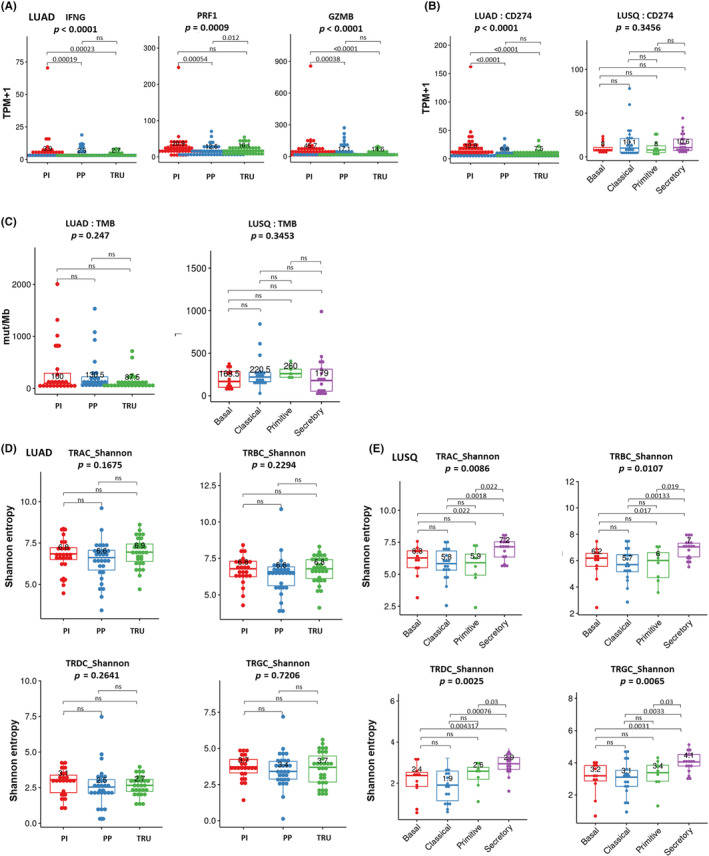FIGURE 4.

Characteristics of predictive biomarkers for immune checkpoint inhibitors in different molecular subtypes of lung cancer. (A) Expression of cytotoxic activity markers (interferon‐gamma [IFNG], perforin [PRF1], and granzyme B [GZMB]) in each molecular subtype of lung adenocarcinoma (LUAD). (B) Expression of immune checkpoint molecules in each molecular subtype of LUAD (left) and lung squamous cell carcinoma (LUSQ; right). CD274 expression levels were obtained from RNA sequencing. (C) Distribution difference of tumor mutational burden (TMB) in each molecular subtype of LUAD (proximal inflammatory [PI], n = 24; proximal proliferative [PP], n = 24; terminal respiratory unit [TRU], n = 30) (left) and LUSQ (basal, n = 12; classical, n = 20, primitive, n = 5; secretory, n = 17) (right). (D, E) Boxplots showing Shannon entropies of canonical T‐cell receptor (TCR) repertoires (TCRα, TCRβ, TCRγ, and TCRδ) in each molecular subtype of (D) LUAD (PI, n = 25; PP, n = 30; TRU, n = 31) and (E) LUSQ (basal, n = 11; classical, n = 15, primitive, n = 8; secretory, n = 18). CTLA4, cytotoxic T lymphocyte‐associated protein 4; mut, mutation; ns, not significant; PD‐1, programmed death receptor‐1; TCM, central memory T cell; TEM, effector memory T cell.
